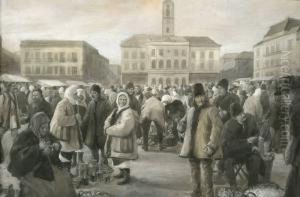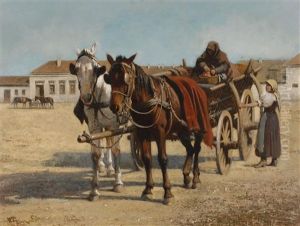Sandor Wagner Paintings
Sandor Wagner, also known as Alexander Wagner, was a Hungarian-German painter born on November 15, 1838, in Pest, which is now part of Budapest, Hungary. He showed an early interest in the arts and pursued his passion by studying at the Academy of Fine Arts in Munich under the guidance of renowned artists such as Karl Theodor von Piloty.
Wagner's work was primarily influenced by the academic art and history painting traditions of the 19th century. He was particularly known for his historical and mythological scenes, which were characterized by their dramatic intensity and detailed composition. His paintings often reflect a strong narrative element, inviting the viewer to engage with the unfolding story.
Throughout his career, Sandor Wagner participated in numerous exhibitions and received various accolades for his work. His paintings were well-received not only in Hungary and Germany but also in other parts of Europe. In addition to his history paintings, Wagner also painted portraits, genre scenes, and landscapes, displaying a versatility that further established his reputation in the art world.
In the later years of his life, Wagner continued to paint and contribute to the art community. He passed away on December 4, 1919, in Penzberg, Bavaria, Germany. His legacy endures through his works, which can be found in various museums and private collections. Despite not being as widely recognized today as some of his contemporaries, Wagner's contribution to 19th-century European art remains significant, offering insight into the historical and cultural narratives of his time.













